College football is a beautiful connection of sport and weird history. Using Mark Schlabach’s Way-Too-Early Top 25 assembled in February and some help from my colleagues, I’ve collected each team’s strangest historical fact, or simply a weird thing that happened.
Some of these are going to be more recent (and surprising) than others, but the variation is representative of how random college football is. At the very worst, you could use this list as a means to remind yourself of who should be fun to watch when we get back to college football.

1. Clemson
Could you imagine, say, Kirby Smart, being the referee for a Clemson-South Carolina game? Because on Oct. 30, 1902, the only referee for a Clemson-South Carolina game was Furman coach Col. Charles S. Roller Jr. Clemson had beaten Furman just the week before, 28-0.
Bronco Armstrong, a Yale player and official, was going to be the umpire, but he was in a railroad accident on his way to the game. South Carolina won 12-6, its first victory over Clemson. And to put a bow on everything, a riot between fans of the two schools broke out the night after the game due to the South Carolina students parading a poster of a Gamecock standing over a Tiger holding its tail.
Clemson and South Carolina wouldn’t play again until 1909, and the next memorable brawl wouldn’t happen until 2004. Also, more than 100 years later, in 2018, Furman’s backup quarterback against Clemson was actually a Clemson student, Harris Roberts.
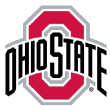
2. Ohio State
There might have been some disappointed students in Columbus, Ohio, in 1926, when Maudine Ormsby won homecoming queen. It’s not because they didn’t like Ormsby. It’s because she was a cow.
Happy #CowAppreciationDay to our 1926 Homecoming Queen Maudine Ormsby! #BuckeyeForLife pic.twitter.com/HqSSe0SICD
— Ohio State Alumni (@OhioStateAlumni) July 9, 2019
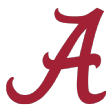
3. Alabama
The prestigious Alabama football program you know today got off to a good start thanks to a former horse-racing journalist from Cleveland named Xen C. Scott. He was the Crimson Tide’s coach from 1919 through 1922, and had a 29-9-3 record while at Alabama, including a signature victory over Penn in his final season that put the program on the map.
Prior to his time at Alabama, Scott spent time at Case Western Reserve, which is a Division III school in Cleveland (it also sounds like the name of a bank).
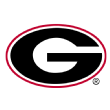
4. Georgia
The “Bulldogs” nickname isn’t uncommon. You probably had a high school in the area where you grew up that had this nickname, and can name plenty of college teams with it as well.
But the way Georgia took on the name is uncommon. The university’s first president, Abraham Baldwin, was a Yale grad. You would think that might have been the inspiration (many do), but it wasn’t.
The name came from the work of the Atlanta Constitution and a couple of writers. Morgan Blake wrote on Nov. 3, 1920, that “The Georgia Bulldogs” would sound good, and three days later, after a 0-0 tie with Virginia, Cliff Wheatley used Bulldogs in his story five times.
It stuck, and somewhere down the line we got “Dawgs,” which is great.
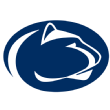
5. Penn State
There’s a dispute about when the Nittany Lions played their first football game, and the answer depends on whom you ask. It’s widely held that the first one came in 1887, when they beat Lewisburg 54-0.
However, in 1881, 13 Penn State students played an informal game at Bucknell, winning 9-0. The game isn’t regarded by many as the first, because it was played under rules that were closer to rugby than modern football rules, like the game played in 1887.
But if we’re being honest, football in either of those years isn’t close to anything being played today, so claiming 1881 is worth it.

6. Oregon
The Ducks started their football program playing at Hayward Field in 1919 and moved to their current home, Autzen Stadium, in 1967. The Ducks’ stadium took nine months to build after breaking ground and cost $2.3 million.
A $250,000 chunk of that was donated by the Autzen Foundation and Thomas E. Autzen, who graduated from Oregon in 1943. However, the stadium is named for Autzen’s father, Thomas J. Autzen, who was an alumnus of Oregon State.
The Ducks are 19-7-1 against the Beavers in Autzen, so there’s no curse or anything to be concerned about there.
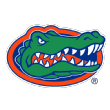
7. Florida
In 1912, Florida was in Havana, Cuba, playing a two-game series that included games against Vedado Tennis Club and then against the Cuban Athletic Club of Havana, a setup now known as the Bacardi Bowl. The Gators won the first game, which took place on Christmas Day.
The second came on Dec. 28 and was much more contentious than the first. Florida coach George E. Pyle allegedly spent most of the first quarter arguing with officials over holding penalties and the officials’ failure to fully enforce penalties against the Cuban Athletic Club. Pyle eventually refused to continue after he learned that the referee was a former coach of the Cuban Athletic Club.
As a result, Cuban authorities arrested Pyle at the game for “forbidding the suspension of a game for which gate money has been charged.” A judge ordered Pyle to take his team out of town “before he put them all in jail.”
There wouldn’t be another game featuring an American team playing an exhibition in Havana until 1921, when the Cuban Athletic Club won 12-0 over … Ole Miss.
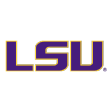
8. LSU
Today, we all know LSU’s Death Valley as one of the loudest stadiums in college football. It wasn’t an easy beginning, though; the stadium’s creation was impossible without the building of dormitories for students. Former Louisiana Gov. Huey P. Long wanted to fund a stadium for LSU, but wasn’t going to be able to get the right funds from the state. However, he saw that there was enough for dorms, and had them built as part of a stadium to provide cover for an eventual expansion project.
The east side was completed in 1932, the west in 1935. In 1937, the stadium was finished with the completion of the north side. The stadium dorms served as “barracks” for ROTC students until 1969.
The dormitories were closed during the late 1980s, and probably for the best. It’s hard to imagine getting anything done at a dorm in that particular location. Of course, anybody in Baton Rouge would probably be at the game anyway.

9. Oklahoma
John A. Harts, a student from Kansas, started the Oklahoma football program in September 1895. Oklahoma didn’t receive statehood until November 1907. There’s not much to be said here other than, well, it seems pretty wild that Oklahoma played football for 12 years before statehood!
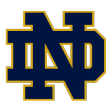
10. Notre Dame
Notre Dame’s leprechaun is one of the most recognizable symbols in college football, whether it’s the logo or the live mascot at the games. While it’s a staple now, Notre Dame took a second (and a lot of animals) to figure things out.
Mascots in Notre Dame’s infancy were a variety of animals, mostly dogs. The other animals are certainly noteworthy, as the South Bend Tribune noted Sept. 22, 1900:
Dad Moulton, Manager Eggeman, and Pat O’Dea Have Pets.
If Notre Dame is unsuccessful on the gridiron this fall, it will not be due to a lack of mascots, and if there is anything in variety of mascots Notre Dame will be successful.
When [trainer] Dad Moulton arrived his train was a menagerie, made up of two trick dogs and canary bird — one of the dogs, a hairless Mexican, Dad intends to use as a hoodoo for opposing teams in conjunction with a black and white billy goat Manager Eggeman received from Fort Wayne.
The goat is of the stockyards variety with a record of having eaten two shirts and a pair of shoes in one morning. He has already shown a bellicose disposition — but under the care of Moulton, who intends to train him, he may be taught to save his combativeness for the opposing team.
Not to be outdone by the trainer or the manger, [football coach] Pat O’Dea intends to send to Colorado to a friend of his who has pet kangaroos. With this aggregation of animals, the kangaroo hurdling hedge fences, the goat bucking the line and the dogs doing tricks on the sidelines, Notre Dame should present a terrifying appearance to any antagonist.”
The dog that sticks out as a mascot, though, was a terrier named Clashmore Mike, often referred to simply as Mike. In 1935, he became the official mascot, and Notre Dame officials really leaned into his status. According to Notre Dame, “He had his own column in the football programs and bravely battled the Pitt panther, Army mule, and Navy goat.”
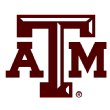
11. Texas A&M
The phrase “perfect season” is usually bestowed upon a team that has gone undefeated and secured a national championship. A reasonable person would never argue that 2019 LSU didn’t just have a perfect season. The Tigers steamrolled everybody they came across, and did it in style.
However, 1919 Texas A&M had a truly perfect season, going 10-0 while also not allowing a single point. The strange thing here is that the Aggies didn’t claim this title until 2012, when they also claimed the 1927 national championship as well as Big 12 titles in 1997 and 2010.
Don’t get it twisted, though. I’m pretty sure 2019 LSU would stomp 1919 A&M.
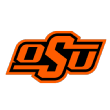
12. Oklahoma State
While we’re talking national championships, let’s discuss one of Oklahoma State’s. The Cowboys were named the 1945 national champions in 2016, after the American Football Coaches Association put together a committee of coaches to retroactively select schools who deserved the Coaches’ Trophy between 1922 and 1949. As a result, the Cowboys ended up a winner.
Oklahoma State finished 9-0 in 1945 after winning the Sugar Bowl 33-13 over St. Mary’s. Army finished the season as the Associated Press No. 1 with a 9-0 record, and Alabama was No. 2 with a 10-0 mark.
The most interesting part of this is it technically makes Oklahoma State the first school to win a football and basketball national championship in the same year. Prior to Oklahoma State being retroactively crowned football champs, Florida was the only school to do so, back in 2006.
With the right attitude, you can claim just about anything in college football.
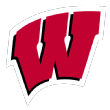
13. Wisconsin
Some great players have passed through Camp Randall Stadium. Ron Dayne ran for 3,235 of his 7,125 rushing yards in that stadium. More recently, there’s Jonathan Taylor, who ran for 3,409 yards at Camp Randall.
But before the stadium was built, the land Camp Randall sits on — a 53-acre property — was owned by the Wisconsin State Agricultural Society, and transformed into a training center for most of the 91,000 Wisconsin troops who served in the Civil War. It also held 1,400 Confederate soldiers as prisoners. The military operations headquarters for the Union army used to be where the luxury suites sit today.
Football was first played at Camp Randall in 1895, and the stadium was built in 1913. While most of us recognize Camp Randall as a Wisconsin football thing, it’s a heck of a lot more.
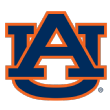
14. Auburn
Imagine you’re minding your own business while at a lake. The shoreline is lower because of a drought, and as a result, you find a pair of pants. That’s what happened to Shannon McDuffie in 2008 at Lake Martin, almost an hour from Auburn, Alabama.
The green and blue madras golf pants she found, covered in mud, had an alligator leather wallet in them with credit cards from the 1980s, an Alabama driver’s license, an honorary Alabama State Trooper card, a Delta frequent flyer card, and a Chevron government credit card that read, “University of Auburn Athletics.” The name on all the cards read “Patrick Fain Dye.”
Dye told Lake Magazine that he didn’t remember how he lost them. That seems odd, since you would think one would remember losing an entire pair of pants, a wallet and car keys.
Dye would auction off the pants later that year for charity. They went for a cool $8,000.
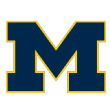
15. Michigan
One of Michigan’s biggest rivals to this day is Notre Dame, and the Wolverines have themselves to thank for it, at least in a way. In 1884, Notre Dame sent Michigan a letter requesting Michigan to teach its students how to play football.
As #NDFB game approaches enjoy 1894 letter from @NotreDame requesting @umichfootball teach their students to play pic.twitter.com/aJfexIk01o
— UM Bentley Library (@umichBentley) September 4, 2014
In 1887, it finally happened and Michigan won 8-0. In the Scholastic, the Notre Dame student magazine, an article mentioned the following:
On account of time, only a part of one inning was played, and resulted in a score of 8 to 0 in favor of the visitors. The game was interesting, and, notwithstanding the slippery condition of the ground, the Ann Arbor boys gave a fine exhibition of skilful playing. This occasion has started an enthusiastic football boom, and it is hoped that coming years will witness a series of these contests.
There would indeed be a series of future contests.
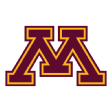
16. Minnesota
Sometimes some very basic things have very basic solutions. The University of Minnesota was founded in 1851, and for the first 29 years of its existence used different colors at graduation ceremonies. It wasn’t until university president William Watts Folwell asked English professor Augusta Smith to select colors for graduation ribbons that would also be used for other occasions.
Smith chose maroon and gold, and they stuck, as the school says, “without any kind of formal action.” They were a fine choice.

17. Cincinnati
The Bearcats! It’s a cool-sounding mascot name, and it’s a real animal that’s also known as a binturong. But the team isn’t named after the actual animal, but rather one of its former players.
Cincinnati beat Kentucky 14-7 in 1914 thanks to the help of fullback Leonard “Teddy” Baehr. It is said that during the game, the cheerleaders chanted, “They may be the Wildcats, but we have a Baehr-cat on our side!”
Afterward, the student newspaper went along with it, and that’s how the Bearcat name came to be.
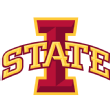
18. Iowa State
Students at Iowa State don’t play when it comes to homecoming. Take 1953, when the 1-3 Cyclones, who finished the season 2-7, “upset” 2-2 Missouri (second-place finishers in the Big Seven at 6-4) 13-6. Excited students marched to the Knoll, where Iowa State’s first family resided, demanding a holiday on Monday to celebrate the victory.
School president James Hilton wasn’t home at the time, but the students persisted. When Hilton ultimately refused to grant their day off, students continued to riot on Sunday and Monday night. Things were so bad, the Ames police used tear gas to get control of the situation.
Some college football fans get tense when Clemson storms the field after every win — just imagine how all of us would react to a similar win and reaction in today’s game.
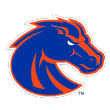
19. Boise State
Could you imagine a team earning a berth in the College Football Playoff and then not being able to play in it because it overlapped with a regular-season game? The powers that be would certainly never let such a thing happen, but something similar did to 1977 Boise State in its final season in Division II (the Big Sky joined Division 1-AA in 1978).
The NCAA Division II playoffs were set to begin on Nov. 26, the same day Boise State was scheduled to play Idaho. While it was a Big Sky game, Boise State had already clinched the division, having beaten Northern Arizona earlier in the season.
Because they had one other game on their schedule, the Broncos were forced to play the Vandals in Moscow, Idaho, winning 44-14. Northern Arizona represented the Big Sky in the Division II tournament and lost 35-0 at home at the hands of Jacksonville State.

20. Iowa
Can you imagine a world where “seemingly harmless” Iowa would be expelled by the Big Ten? Because it happened on May 26, 1929.
Iowa would be out of the Big Ten for just under a year because of allegations that players had been compensated. The school had disqualified 27 players on Dec. 11, 1929, in hopes of being reinstated by its fellow Big Ten members. However, it wouldn’t rejoin the conference until Feb. 1, 1930.
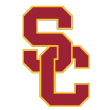
21. USC
Ohio State’s band famously claims itself to be the best in the land, but USC has its own impressive accomplishments and accolades.
Fleetwood Mac invited the Trojan Marching Band to perform “Tusk” on its 12th album in 1979, which became the Trojans’ first platinum album. They earned a second when they appeared on the reunion album “The Dance” in 1997. No other collegiate band has accomplished such a feat.
For the record, no claims of who has the best band are being made here. I’m simply stating facts.
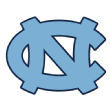
22. North Carolina
In North Carolina’s first season of football, the Tar Heels started their four-game season 0-2 and decided to hire a new coach. All-American Princeton tackle Hector Cowan, who was still in the middle of his playing career, was their pick.
Cowan came from New Jersey to Chapel Hill, overhauled the UNC offense, went 1-1 in two games played in May 1889, then returned to Princeton to play on its national championship team that same year. Very casual.

23. Texas
There are plenty of notable oranges in college football, whether it’s the Bowl, Syracuse’s or Tennessee’s. But Texas’ burnt orange stands out because of its unique shade and a lack of availability due to World War II.
The Longhorns’ burnt orange dye was produced in Germany, and became unavailable for years during the war. So Texas switched to a brighter orange and didn’t go back to the burnt orange until five years after the arrival of legendary coach Darrell K. Royal in 1962.
At the time, many Texas students and fans didn’t like switching back to the burnt orange. They complained about the “dark, muddy, and murky burnt orange” and requested a switch back to “correct light to medium orange” in 1966.
Thankfully, that switch didn’t happen. Now the only symbolic Texas controversy we have goes back to “Horns Down.”
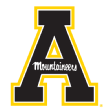
24. Appalachian State
In 1942, editors James Storie and Elizabeth South of The Rhododendron, Appalachian State’s yearbook, found themselves one picture short of a balanced publication. They called upon freshman Lloyd S. Isaacs and Bill Mitchell of Observer Publishing for help.
What they came up with was a character — Dan’l Boone Yoseff from Appalachian. The original image of the mascot now known as “Yosef” isn’t certain, and according to App State, “Accounts mention a bookstore staff member generating a sketch, but an artist in Charlotte has also been credited with the creation of the mountain man.”
No matter who created the original image, Yosef was enough of a hit to remain the school’s mascot to this day.
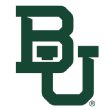
25. Baylor
The Bears’ mascot could have been a lot less fierce. Nominees students voted on for the school’s mascot included the buffalo, which is fine, but also the “bookworm.” Over 50 bears have been the live mascot for Baylor, but the first, which arrived in 1917, was won in a poker game.
The bear, later named “Big Herb,” was riding a train carrying the 107th Engineers to their duty station in Waco, Texas, when the train stopped. The cub was found by soldiers and won in a bet by Herbert E. Mayr, who kept the bear until he became too big to be a pet. Mayr donated the cub to Baylor, and it became the school’s first live mascot.
Baylor had to rename the bear, because its original name was “Little Poo Poo.”
ESPN reporter Dave Wilson contributed to this story.
